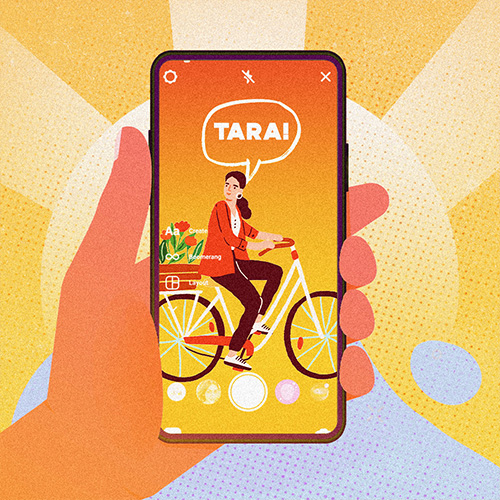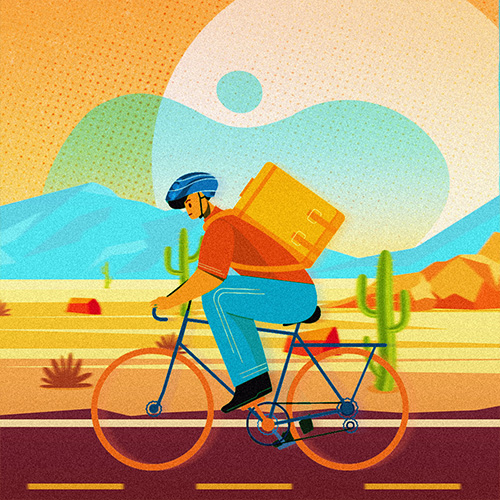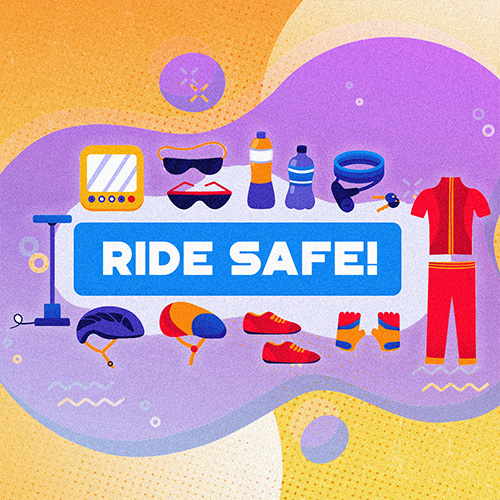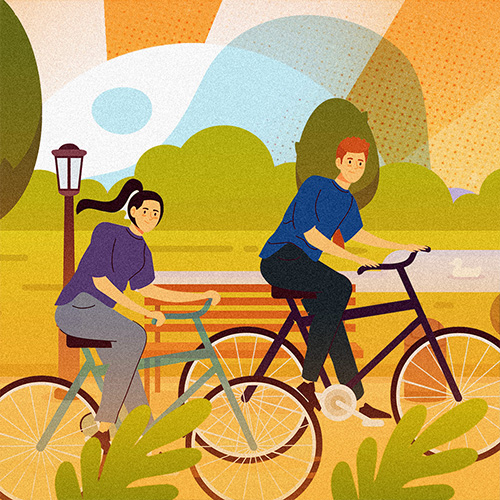#LetsTalkAboutCycling: 6 things every new cyclist must know before hopping on a bike
Interest in cycling is again on the rise, but here are a few tips from experts on important things you need to know before hopping on a bike.
Alert Level 1 in Metro Manila and several other areas, check. Oil prices hitting record highs, check. Onset of the summer season, check.
Maybe it’s about time to channel the inner Freddie Mercury in you and go ride your bicycle? For newbies who want to take up the hobby, enthusiasts who want to level up in the sport, or those who are considering to go bike commuting in light of astronomical pump prices, a number of seasoned cyclists and leading voices in the community shared a few reminders during the March 11 Twitter Spaces session “Let’s Talk About Cycling,” hosted by PhilSTAR L!fe.
Missed our Twitter Space event? You can still listen to our discussion! #LetsTalkAboutCyclinghttps://t.co/WuQR4iK4vQ
— PhilSTAR L!fe (@philstarlife) March 10, 2022
1. Clarify your purpose and do your research.
Jan Belmonte of Cycling Matters said newbies must first take into consideration how they’ll use bikes in their everyday lives, whether it’s for errands, for transportation, or for leisure.

Determining your primary purpose for cycling will then guide and narrow your research, which is now much easier due to the vast array of resources online. For starters, Belmonte also recommended their website’s series of guides for beginner cyclists.
Eloiza Regaliza, a cycling content creator with over 114,000 YouTube subscribers, said it won’t hurt to consult with bicycle shops about the specifications that may suit one’s needs and liking.
“Be sure na iyong pagtatanungan mo, knows about the bike that you're about to buy,” Regaliza said. “May mga stores kasi na basta makabenta lang.”
Journalist and cycling enthusiast Ivan Mayrina, meanwhile, said comfort should be one of the primary considerations when biking, noting that finding a proper-sized bike is necessary to enjoy the experience.
“Marami diyan halos di maabot bike nila,” Mayrina said. “You have to make biking sustainable, and you can't make it sustainable if you're not comfortable.”
He also advised against purchasing road bikes for commuting purposes, as they have narrow tires built for traveling at speed on paved roads. Roads in Metro Manila, Mayrina noted, are bumpy and are not friendly to such kinds of bikes.
You have to make biking sustainable, and you can't make it sustainable if you're not comfortable.
A better bike if one would often need to negotiate the city's unfriendly roads would be a gravel bike, which has more versatile wheel sizes, or a mountain bike, which has chunkier tires and a more relaxed riding position.
Bikes with fat tires, designed for rugged terrain, are also not recommended for cycling newbies, Mayrina added, as they can be quite heavy.
2. Have a biking buddy and join a cycling community.
Cycling by one's lonesome at times can be meditative and relaxing. But having a companion or a community may make the journey more fun and sustainable in the long term.

Cycling advocate Lester Babiera, who said he just picked up the hobby during the pandemic, said that biking is a social activity, and it’s always best to have company while hitting the road.
“If you have a friend, especially an encouraging one, then it's gonna be easy for you to know the process and to adapt to a new kind of lifestyle,” Babiera said.
“I'm thankful kasi I have those friends, and at the same time, I met people not just online but also in the cycling community," he added.
Citing examples, Babiera said there are women bikers who like cycling with fellow ladies, while there are also others who prefer slow-paced companions to daredevil riders.
In terms of finding a community, one could start by searching Facebook groups near one's house, or by asking bike shops within one's own community if there are group rides in the area where you could tag along.
3. Know your terrain.
Given the irregularity in the conditions of roads in Metro Manila and the unpredictable traffic conditions, doing due diligence is especially crucial for those who are planning to go bike commuting.

Robert Basilio, a bike commuter for several years, said one should try to plot a route and ride out during slow days like a weekend. With not many cars on the road, this would enable a cyclist to be familiar with the roads and know if there are tricky corners, potholes, or bike lanes along the route.
“Magiging regular iyong ruta mo, malalaman mo nasaan ang potholes you used to ignore previously when you weren't biking,” Basilio said. “Check your path out, check the shortcuts.”
Babiera noted that biking requires commitment and conscious effort, and the first few days or weeks are “very crucial” in ensuring a more enjoyable and sustainable habit.
“Doon mo makikita if it's for you. We have bad roads, at the same time, it can be tiring,” Babiera said.
Pag nasanay ka na, it's a way to build up your confidence on the road.
4. Know the essential skills.
Regaliza pointed out that even newbie cyclists should know how to fix a tire, as there’s no assurance that there are vulcanizing shops nearby in case of emergency.

She also stressed the need to stay hydrated all the time, especially during the summer season, lest one run the risk of suffering a heat stroke.
Belmonte, meanwhile, said bikers must also know how to use hand signals, so as they’ll be “visible” to other road users. Aside from knowing how to use hand signals, Belmonte said practicing something as simple as eye contact with pedestrians and motorists may also establish your presence on the road as a cyclist.

5. Safety first at all times.
Journalist and triathlete Raffy Tima said safety should be ingrained in every cyclist in that one must always wear protective gear all the time, even if it’s just a short trip.

“Marami pa rin kasi akong nakikita na, ‘Short lang naman ang ride ko, diyan lang, one kilometer. Di na ako magsusuot ng personal protective equipment,’” Tima noted. “Sana huwag tayong tamarin.”
'Short lang naman ang ride ko...Di na ako magsusuot ng personal protective equipment.' Sana huwag tayong tamarin.
The Metro Manila Development Authority has recorded 2,397 bike accidents in the capital last year. Of that figure, 33 resulted in death while 1,719 resulted in non-fatal injury. About 645 incidents resulted in damage to property. With the growing popularity of cycling, the government has expanded bike lanes in partnership with institutions like the World Bank, but accidents still happen.
Tima recalled sustaining minor injuries once but thanks to his helmet, he didn’t suffer head trauma.
“Kabisado ko na iyong area, pero nabulaga pa rin ako,” he said.
He also urged bikers to do away with “distractions” like wearing earphones and listening to music during trips, which could affect one's situational awareness and lead to accidents.
6. Try to grow the community.
Babiera said that fellow bikers—whether they simply run errands or roam over their neighborhood—should show that they’re proud of the quasi-movement they're part of that is cycling.

"Post yourself on social media para malaman nila na andito tayo, na kailangan din natin iyong space at part din tayo ng kalsada," Babiera said. "If you're not cycling, please influence the drivers to respect us and keep us safe."
Post yourself on social media para malaman nila na andito tayo, na kailangan din natin iyong space at part din tayo ng kalsada.
Belmonte said that popularizing cycling will also help educate and spur other motorists on how to be better road users. With a growing community, the hope is that policy makers may also be more induced and incentivized to build roads and cities that are more conducive to cycling.


